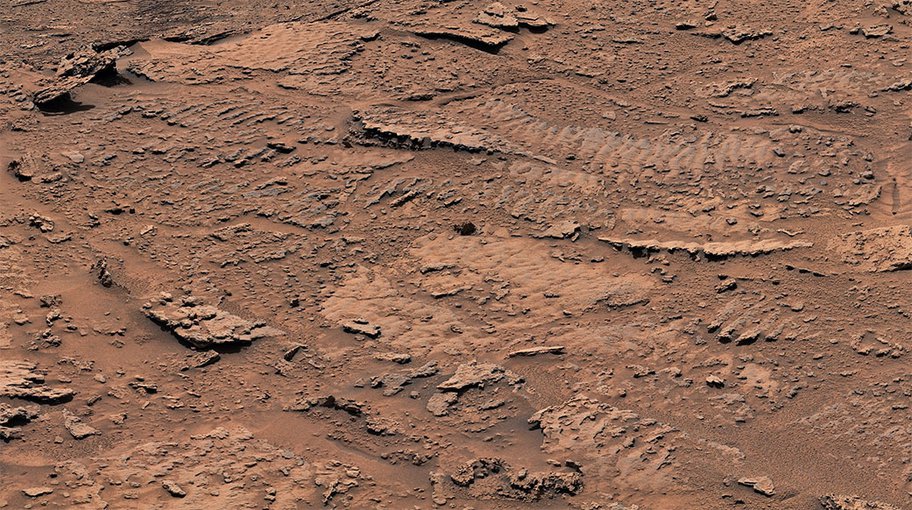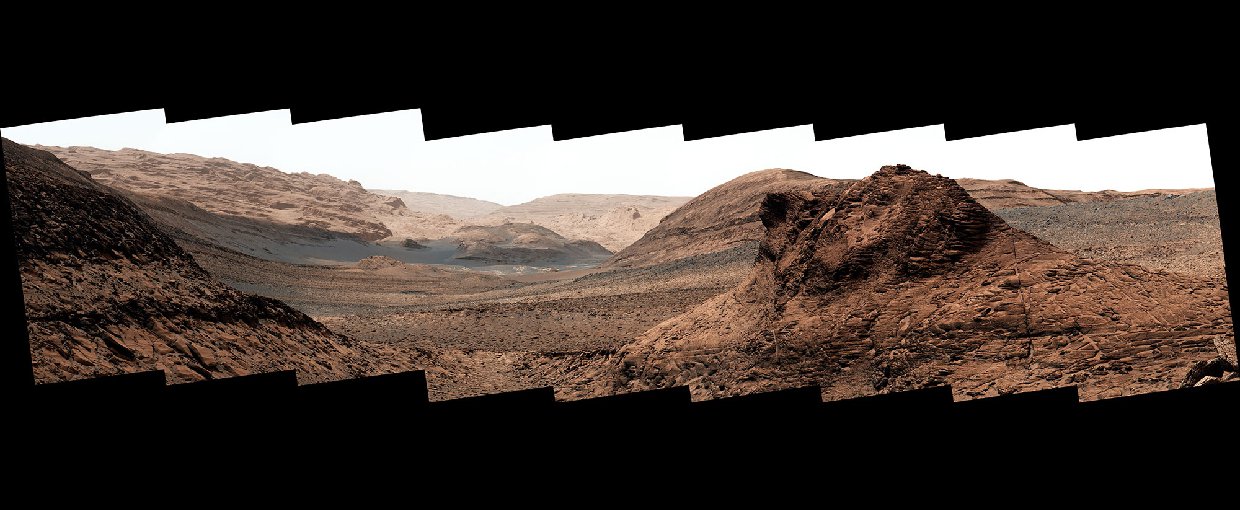
NASA’s Curiosity rover has identified fossilized ripples in the shallow bed of an ancient lake on Mars. The find is surprising because the area in which the ripples were found was thought to have little likelihood of ever being wet. It is the first feature of this type spotted by Curiosity since it has been exploring Mars’ Gale Crater since landing on November 26, 2011.

Billions of years ago, waves on the surface of a shallow lake stirred up sediment at the lake bottom. The sediment formed into rocks with rippled textures that are the clearest evidence of waves and water that NASA’s Curiosity Mars rover has ever found.Image credit: NASA/JPL-Caltech/MSSS.
Curiosity uncovered the ripple features while exploring an area with sulfate-bearing rocks that was thought to have formed in drier conditions than areas previously explored by the rover. Sulfates are a type of salty mineral, and their presence in the area has been interpreted as salts that were left behind when Mars was drying out. However, the ripple features are proof that the area wasn’t all that dry. The ripple texture was formed when waves that the surface of a shallow, ancient lake stirred sediment at the bottom. A press release from NASA discussing the findings is available here.
NASA’s Curiosity Mars rover has discovered lots of evidence of ancient lakes on the Red Planet – and this recent panorama shows intriguing new clues. Credit: NASA/JPL-Caltech/MSSS/University of Arizona
Click here to read about the finding in a post from Many Worlds.
Related:
NASA’s Curiosity Finds Surprise Clues to Mars’ Watery Past (NASA)
The Many Worlds Blog chronicles the search for evidence of life beyond Earth written by author/journalist Marc Kaufman. The “Many Worlds” column is supported by the Lunar Planetary Institute/USRA and informed by NASA’s NExSS initiative, a research coordination network supported by the NASA Astrobiology Program. Any opinions expressed are the author’s alone.

